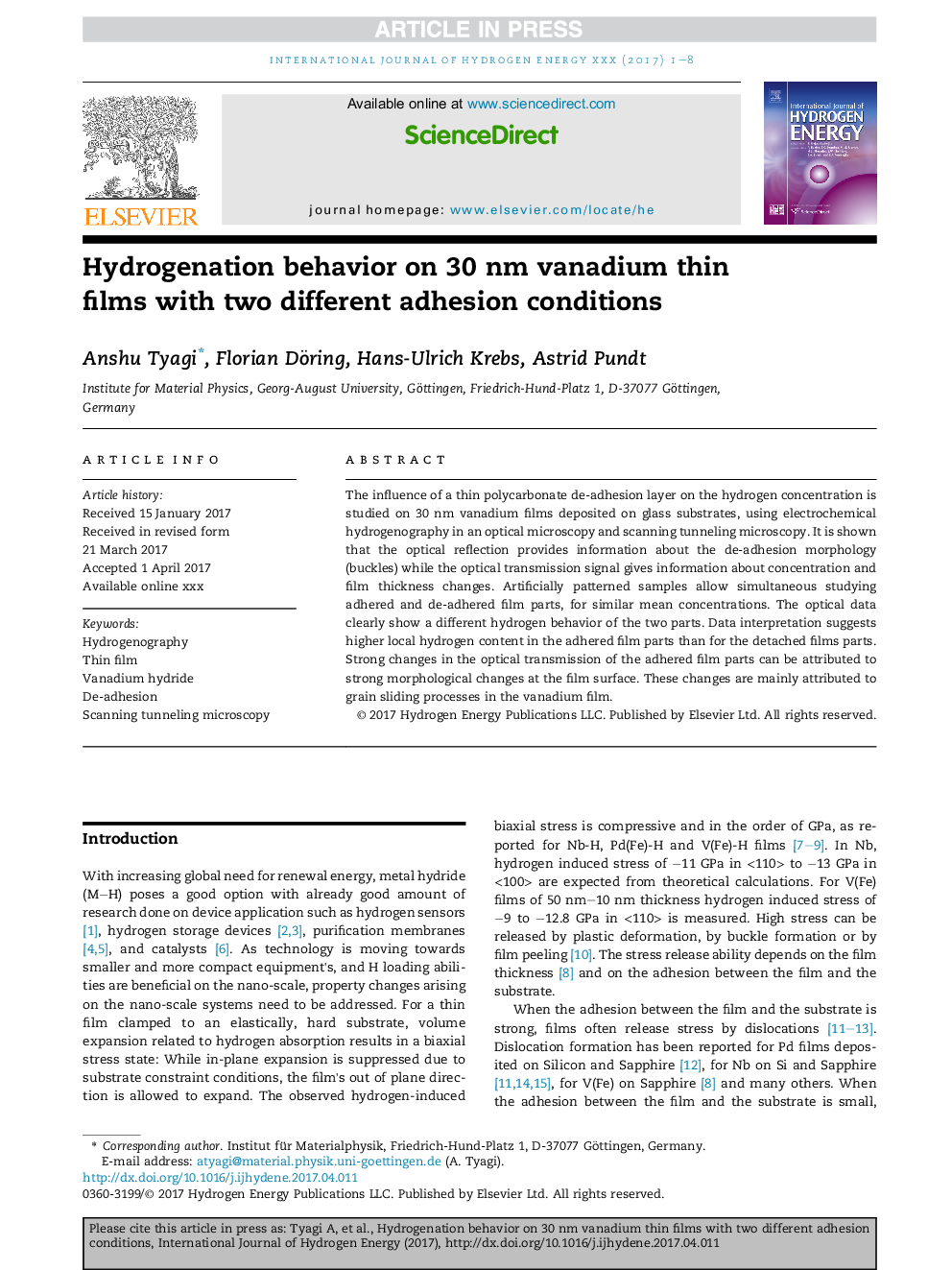| Article ID | Journal | Published Year | Pages | File Type |
|---|---|---|---|---|
| 5145493 | International Journal of Hydrogen Energy | 2017 | 8 Pages |
Abstract
The influence of a thin polycarbonate de-adhesion layer on the hydrogen concentration is studied on 30Â nm vanadium films deposited on glass substrates, using electrochemical hydrogenography in an optical microscopy and scanning tunneling microscopy. It is shown that the optical reflection provides information about the de-adhesion morphology (buckles) while the optical transmission signal gives information about concentration and film thickness changes. Artificially patterned samples allow simultaneous studying adhered and de-adhered film parts, for similar mean concentrations. The optical data clearly show a different hydrogen behavior of the two parts. Data interpretation suggests higher local hydrogen content in the adhered film parts than for the detached films parts. Strong changes in the optical transmission of the adhered film parts can be attributed to strong morphological changes at the film surface. These changes are mainly attributed to grain sliding processes in the vanadium film.
Related Topics
Physical Sciences and Engineering
Chemistry
Electrochemistry
Authors
Anshu Tyagi, Florian Döring, Hans-Ulrich Krebs, Astrid Pundt,
